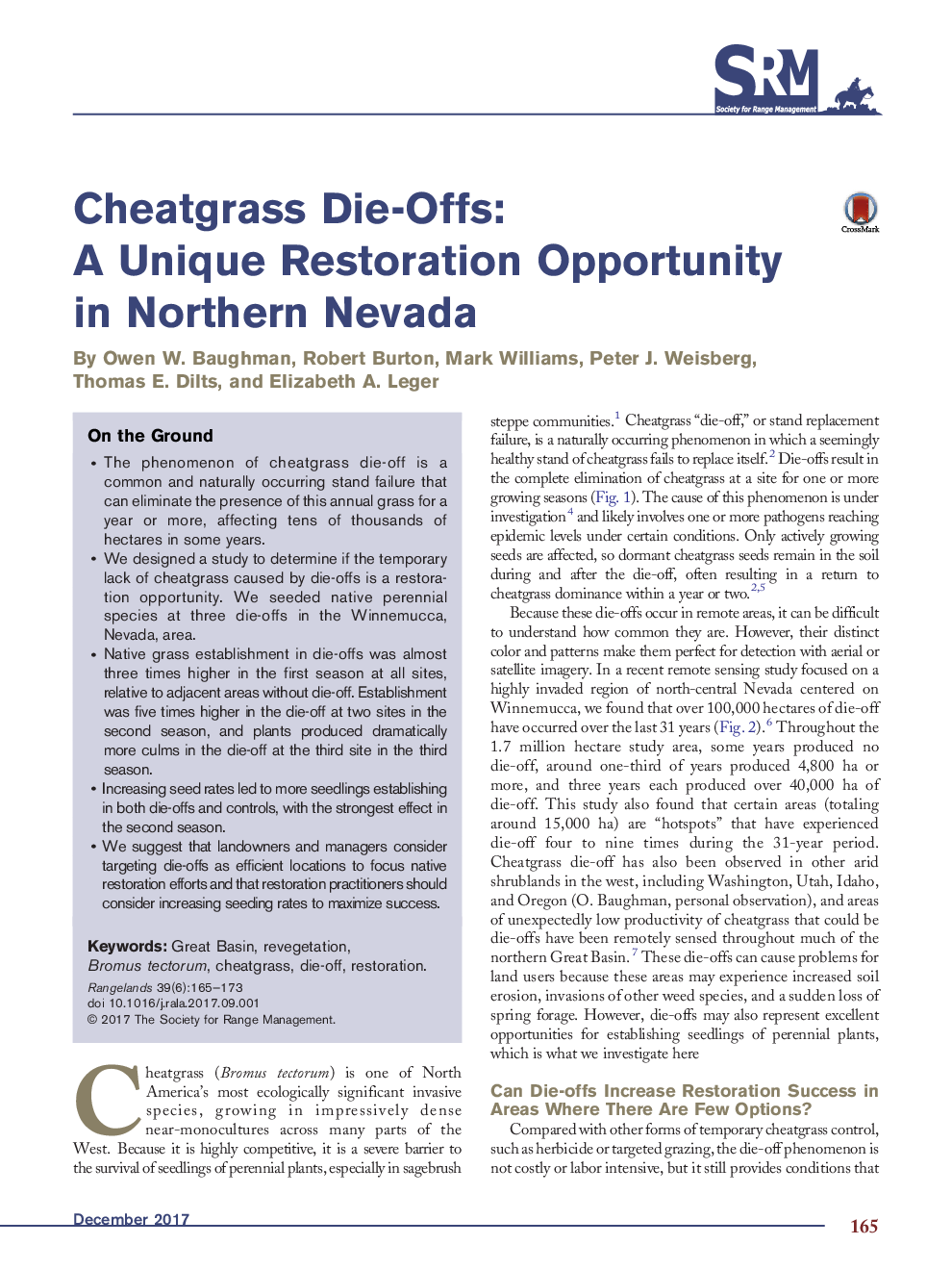| Article ID | Journal | Published Year | Pages | File Type |
|---|---|---|---|---|
| 8849683 | Rangelands | 2017 | 9 Pages |
Abstract
On the Ground
- The phenomenon of cheatgrass die-off is a common and naturally occurring stand failure that can eliminate the presence of this annual grass for a year or more, affecting tens of thousands of hectares in some years.
- We designed a study to determine if the temporary lack of cheatgrass caused by die-offs is a restoration opportunity. We seeded native perennial species at three die-offs in the Winnemucca, Nevada, area.
- Native grass establishment in die-offs was almost three times higher in the first season at all sites, relative to adjacent areas without die-off. Establishment was five times higher in the die-off at two sites in the second season, and plants produced dramatically more culms in the die-off at the third site in the third season.
- Increasing seed rates led to more seedlings establishing in both die-offs and controls, with the strongest effect in the second season.
- We suggest that landowners and managers consider targeting die-offs as efficient locations to focus native restoration efforts and that restoration practitioners should consider increasing seeding rates to maximize success.
- The phenomenon of cheatgrass die-off is a common and naturally occurring stand failure that can eliminate the presence of this annual grass for a year or more, affecting tens of thousands of hectares in some years.
- We designed a study to determine if the temporary lack of cheatgrass caused by die-offs is a restoration opportunity. We seeded native perennial species at three die-offs in the Winnemucca, Nevada, area.
- Native grass establishment in die-offs was almost three times higher in the first season at all sites, relative to adjacent areas without die-off. Establishment was five times higher in the die-off at two sites in the second season, and plants produced dramatically more culms in the die-off at the third site in the third season.
- Increasing seed rates led to more seedlings establishing in both die-offs and controls, with the strongest effect in the second season.
- We suggest that landowners and managers consider targeting die-offs as efficient locations to focus native restoration efforts and that restoration practitioners should consider increasing seeding rates to maximize success.
Related Topics
Life Sciences
Agricultural and Biological Sciences
Agricultural and Biological Sciences (General)
Authors
Owen W. Baughman, Robert Burton, Mark Williams, Peter J. Weisberg, Thomas E. Dilts, Elizabeth A. Leger,
